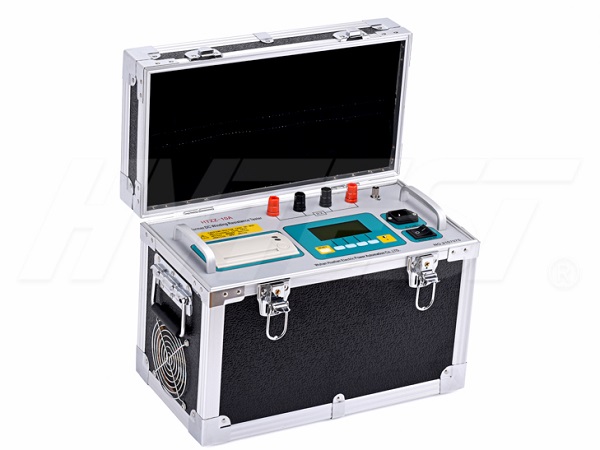Detection Technology
Four test methods for DC resistance test
Whether the transformer can operate safely requires various preventive tests on the transformer to provide a better guarantee for the safe operation of the transformer. Only after various tests can we check whether the various parts of the transformer meet the standards, such as whether the tap changer contact is good; whether the winding welding is intact; whether the winding or lead wire is complete, etc.
Using the transformer DC resistance tester to test the DC resistance of the transformer windings seems simple, but it is also a project that requires very high accuracy in terms of time. It is to ensure the production quality of the transformer and the safety and maintenance during use. An important means of quality.
Four common test methods for transformer DC resistance test
1. DC resistance test by step-down method
This is a simple way to measure DC resistance. Apply a direct current to the resistance under test, measure the voltage drop on the resistance with a millivoltmeter or voltmeter with an appropriate range, and then calculate the resistance according to Ohm's law, which is the step-down method.
2. DC resistance test by bridge method
When measuring with the bridge method, the single-arm bridge method and the double-arm bridge are often used to measure DC resistance. When the measured resistance is above 10Ω, a single-arm bridge is used; when the measured resistance is 1Ω and below, a double-arm bridge is used. For small-capacity transformers, single-arm bridges can use dry batteries above 4.5V as power sources, and double-arm bridges use 1.5-2V parallel dry batteries or accumulators as power sources to directly measure the DC resistance of the transformer windings.
3. DC resistance test with assisted magnetic method
This method is to force the core magnetic flux to quickly saturate, thereby reducing the self-inductance effect and reducing the measurement time.
(1) Use a large-capacity DC power supply to increase the value of the measured current. For example, using two 190Ah batteries and passing a 40A current to measure the DC resistance value of the medium-voltage winding of a 250MVA/500kV autotransformer, it only takes 1 to 2 minutes for each tap.
(2) Connect the high-voltage and low-voltage windings in series to pass current, and use the same-phase and same-polar high-voltage windings to assist magnetism. Since the number of turns of the high-voltage winding is far more than that of the low-voltage winding, a smaller current value is used to saturate the iron core. Such as a 360MVA/220kV transformer. The iron core is a five-column type, the low-voltage winding is delta-connected, and the resistance of the high-voltage and low-voltage windings of one phase can be measured at the same time within 15 minutes with a 10A current.
(3) Direct resistance measuring instrument method using constant voltage and constant current source method. It uses an electronic circuit to realize automatic adjustment, and the stabilized current source is smoothly entered into the stabilized current source in a very short time, and the output current is up to 40A, which is suitable for various transformer measurements. If the high and low voltage windings are measured at the same time, the difficulty of measuring the DC resistance of the three-phase five-column large-capacity transformer is solved.
4. Degaussing method DC resistance test
Contrary to the magnetic assisting method mentioned above, the degaussing method strives to zero the magnetic flux through the iron core. There are two methods used:
(1) Zero sequence impedance method. This method is only suitable for transformers with YN-connected three-leg iron cores. Connect the three-phase windings in parallel and apply current at the same time. Because the magnetic flux needs to pass through the air gap to close, the magnetic resistance of the magnetic circuit increases, and the current of the windings decreases accordingly, achieving the purpose of short resistance measurement time.
(2) Magnetomotive force cancellation method. In the test, in addition to the current applied to the winding, the non-tested winding is also energized to make the magnetomotive force generated by the two equal in magnitude but opposite in direction to cancel each other, so that the magnetic flux in the iron core approaches zero. The inductance is reduced to the minimum value to shorten the test time and purpose. For example, for a 120MVA/220kV three-phase five-column transformer, the degaussing method and the constant current method are used to measure the DC resistance of the high, medium and low voltage windings, and it is stable in 3 minutes. Compared with the constant current method alone, the charging time is shortened by more than 10 times.
Insulation resistance tester measurement | 2021/9/6 | reading636time Partial discharge detector safety | 2021/9/5 | reading659time return


